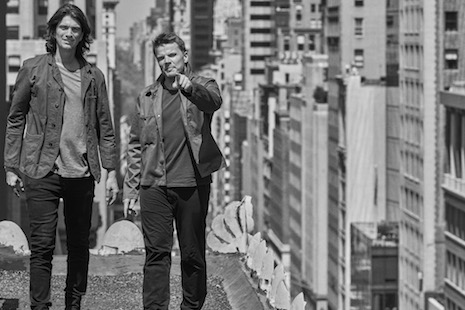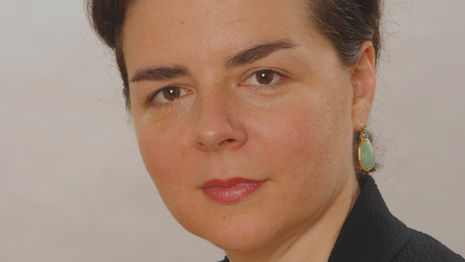By Thomaï Serdari
Traditionally, what makes the headlines in the design press does not necessarily affect the business world. But it should. Good design means big business.
Working with a visionary designer who understands the user experience from the ground-up translates into successful products and experiences in all industries, from retail to hospitality to the corporate world, and even city planning.
What clicks in bricks
WeWork CEO Adam Neumann is an example of a businessperson who believes differently than the status quo.
For him, design is key in serving the professional communities that rent flexible co-working space from WeWork, a private company that serves professionals in 18 countries through 170 properties.
Mr. Neumann, and his architect by training, cofounder Federico Negro, invested in adding a creative team to WeWork’s structure early on, a strategically necessary move because the fundamental concept of WeWork is directly linked to its physical space and the solutions and services that the company offers.
Clearly, for Mr. Neumann, this was not enough.
As announced on May 14, WeWork appointed Danish architect Bjarke Ingels as its chief architect, an executive-level position compensated in equity rather than with a salary.
The story broke in the architectural press with aplomb.
 Adam_Neumann with newly appointed WeWork chief architect Bjarke_Ingels. Portrait by Alexei Hay. Image credit: WeWork
Adam_Neumann with newly appointed WeWork chief architect Bjarke_Ingels. Portrait by Alexei Hay. Image credit: WeWork
Mr. Ingels is the architect of some of the most innovative and desirable properties in New York, such as Via57, the Hudson River residential superblock, and XI Towers in West Chelsea, among others.
As Charles Duhigg wrote for architectural magazine Dezeen (July 22, 2015), Mr. Ingels “has been compared to a nightclub DJ and a spiky-haired, muscle-shirt-clad Hamlet, and has been hailed as the next Rem Koolhaas.”
Mr. Koolhaas is mostly known in business for his innovative concept Prada store in New York’s SoHo shopping district, which opened in 2001 and made history by forever changing retail experience.
“The overall idea is really to focus on buildings for now,” Mr. Ingels told Erin Hudson of the Architectural Record about the WeWork news, “then take it to campuses and neighborhoods, then entire cities.”
Mr. Ingels sees “WeWork as a scaling device” and envisions the company “almost doing in the physical world what a lot of other technology companies have done in the digital world.”
Designer shows
Why is WeWork’s recent move noteworthy and what can other businesses learn from it?
Because it is imperative for businesses to realize early-on that its head designer is the one with the ability to cull talent who would otherwise be unknown to business executives and to capitalize on their fresh ideas that stem from local culture and reinforce a sense of place.
The addition of Bjarke Ingels is a game-changer for WeWork.
This is a company that aspires to change our work-life experience by emphasizing the importance of critical thinking in design rather than relying on cookie-cutter solutions that box us all in.
Similar examples abound in the fashion industry that enabled in-house creative talent to rise to celebrity status mainly because brand product and, often, brand content are, by definition, linked to a singular creative mind.
Indeed, what would Chanel be without Karl Lagerfeld? What would Gucci be without Alessandro Michele?
IT IS DIFFICULT to value the intangible, especially before it acquires material form.
Still, this type of design news is worth a business conversation. Maybe even a bit of celebrity status.
Thomaï Serdari is adjunct professor of marketing at New York University’s Leonard N. Stern School of Business, New York. Reach her at [email protected].
{"ct":"qh6DSs82UK+JnAP2ZZQhmqMlnriNPFDcywSyjDxpVCdXNCsALBXlIBPeUKmWGqusv6sFjxyfV+7c6mGLRO\/6OUW\/KAVNqTkoyODy5NdnOksdEtoOaG0CnZjFROTLIObxF9V4VRZlOzOXgb7OIthiMBwdagSBJowF9jd543bhG+er5hqqxyeJj\/TWAtx9ggp1oh1M50jrZ0fIGtcKjHaRshlhuvFvjIjbptrm1GERcCK3j1S2CzHwJr4Y1pzPLIdrIZp\/5QNkAXX4hPcvlEDN9jRsneReF+B0Z+K44+t51Vgw9Az3x0Bvf1gK6NQDcL6z9eFqf6HCBAEgRLqIYK9o1AKbiZBS8LHJwXY3j9AIoLYX6EMqKhhhb5raIS04h1nEs7VlRE3uXHuq0u4xxZkuhq\/+XzQh\/PWr4tm6GyEoPADywVUuoxVnwdU3VLJPATaban1WO\/HH0bTqQFG8F633E29\/tUi7z1rM9QjHf7cyD4qxY5i6v5WzMMp4xWTYaPOmjho3hYAvCuGvW2lmQT5bVK\/VoFum+4aCx4RMs6+xKhXltn+7dXJ8Zr\/kYXk08cxuZq51wkGBSdFS0yDk8RFNAQkWZCR2fyUpbTNClr95kNWazVTihEVYLjxRnPzMnYFR0SYVQenL8oO093CEjADiD0xgN0AeRHsEE7gQqwDdDTSIK1axBFL8iFQQsUM7UyFpBdr768uSClITAp7IAx5eC50V6f1\/R+DMEB0OqLQEPn5IDU02evsPCZhZJngQOF7HR6ct0wx47b\/W\/vPUCoJUL+YIKJ+EHRXbY+w2TYed+VW1AF9aoez3X3Z90EVhIff+MiXBkB1AeeEJpId\/+iKTqGDnEb9CcO89T6PFs41pp1Rl\/lDS4Bw\/yJPdW7azWrbbMNLoOeOoYiT76osnoBLK1lMVYmr+guOEzGC8RVh4pcFgq0hBgPRpgY4k7Ju5rjGto5RIornlIIAayAQ8LmDPn6DN5Nw0K+ywMQsoXPvlnmaxb8Y8PfgZdB77CE88WTHRO6\/anZMj68o+s3iT7tGSny6vWSS6i2+J5S0E\/EfGac7ONVvLrxnOGmhEKcViZ3hIv6+luo1lwqqmyEeSJZ8CI\/lDDwEKv3p2SwCsoNqzrq8fqTfll2xFgVDCVd\/lS8NrWKsYdKDq7ERD7fquLGcI2KwvYmoZRdD4MeZxR+s2kVzEo9zPbw9MUBLBxY7h38rkBwb0hAlGLYrCPhEiX3XjRpxH\/Lu1N4XUc+Nj8N+JqFHmHk6MtFfbMIeL2xBBiS9N0g6b0wSKn\/D5h9NaFmPme+JXbQFgu01hDw9weVHR\/nwUlBx7TwnqggX9oZ5hWGZnN9zYVRq584doG95TS5CDOAVraouSB28\/EMrEf2yjQ8kKjBcojudgF99pULTCd5J8+XMi8kwfJAdMPIkFrx0FTOYzks6WXQMAsjnVIqPySWVxbofoBw8ubkwNd8UQ8uljXD2xlc1VFsCpyblqZ4NGml9rZSJQqWYGfpW6\/luJ7XbN2ZaQHvU8LskNv+G\/l\/1+Cscs6Ywa1T81fcoN5aeL5T73BXGp1nkvwdEXL5RI2xNoJlNa1Rq0tDiC\/IgB7ySyP5mBE6SPhonmf+zxLsPXfNHEotuFxN0VXZSuDhyRUXu1IfUjm3HZmWfTpeYQW8iwIK2To557183qcqPkzgydYSBUqEqytBuVaN+K4cIO764ZPCH+x\/pY7uPdmD3ytJJ1Pw4gDxyiEvOWSyGFiddhRS7xa1KmglZTjqkl7LzXB7WGrKTNZdUuTvZXBxHghHEWniW\/wZPyFVT9MITdklDzUpahBeaAoIAAQmlss3jjNX8nXTg\/v\/5+MSTKWU3CCqVXAVS4Yj+cjv5vLDLfRJt4xD+p8QugyoVWgXG0DNNSj85HgIdD8Tn57p8h\/rfgNQSSYBuUg4kv++BiotKe\/T3TPipJVClTPaSeGJATwFZyjFg+\/JaS3GzquiLsxpIpvPHD9egz305TvKltdtTWpzXToYcSdQjy8loPL6wAyvMV+geKcaKaC5DFqPOVI8qaizXJxqV6\/kCVjYG7B1k+ikjoqyGr1X1MR34o4WorJzVir5HyY\/4xSogJWICe8g7OrcSNOajRt42uCxxDSn4Dl06EPay5Dk5vm56fIX0yIJ9SiNNHs\/RMxe2X1uMUGPPjWkrjTTfUCp4tFiBn00Hy6O5paQmtcMAuNKbQlzJC8Ub44qTuii4cmkBrAWLvRYSIK1w8GPcTIBROniBOz5IBqh6ZEtvQLfoIHxIIQCKAyFV0ZeQUTihEMZ9gMAd83A054DlhXEUwfG16j51MBvIrbpUFLCTPaIh4CMYdWlGUvaPPhRmnPaqj4upQ\/ABpMKkm0zwtb2Tm0+fNLn\/BVo485ZCNwFcAoD+a81DaKWConw\/KDyh2BEVkk4jXSp0MMT5Bcbm7TMx4jVaJ5EtcdZIm4OrGOrOkWX0MpmbDVaf6T+NId5EiKZkUCo030bXfvjXzIt0slJx2xtwqFIOGMprLR4wMUVCofopIQdbjckkIbz7TcVBPZl5\/EZuvLrR1qxzhAv7o\/FxS7vQGZUfjkGsXvUZy7Uz4sNJJefY14WUyDs6biOpPixrG4i3wS7fqcHeEdawePbEaR0RH3SUDnh8oLRsIBWSMMrirBPYh7H7zRvjLNZdDyscZ5w0cFTG4Ayp2aIZyxxMYHwHP2z7cBFVDg8Ms+AIkXjodkxjL4f\/aXFM\/OmID9mFFE\/rLbY53qHH7aZB5arfW15dfUaqSdQl3WppGi0YlOmfTFNnjmZph4Zm4v9chaIdRjg0CetaafZ6E9jpk\/pJLO429iTcYUJCqBQpddpgfiCAwfURtC97BhwjKkNvvvtlJVgqu3KM4JTC8Cx98kewL3Or666nJB+Wr6TA8+zMm3fOcn6eUA0DETOLuomK91c3PZvlFq42npJVqprv2Hq750eF2yVRFhNXUWbMNBTLK7382x9VPNJJ6CsAk7l\/lNbisP9Biq68Ti11R2FO2dFxpNoIjS7kKe1Sq2qW3SqSI8zQfW8Pyf3+ClgEbNeaMYGEisnrRc8cnfq4CZS1WZk8ICOZcr0qPfNyqvnCuNsXEAIuEmpK\/okVfFoSLnUYX65AcZ+ds8HOLN7qrWZCDLo0tLYbf8Jrku++BETDszM5Y3TjEOVrsavmPB\/48J\/xDBNoM2NHP8KAmxumy1hLCMxnERUSUm19VlQ0pgdTpG3vXGtNFmfhyarEGADAyQQig9EYemdSFIcTwjq4GTlUwxCW8b2w\/7w6luu+rjqLZFX\/cznxzrG8tEBhxI71IeEHVYxmQTafYTNGqK+GqxFm1uxdh9paN3MyV8gNSW46ewIhfx7vGsJTlyEKnQk59sFxhu6OOAHj+tjahSzwziEaqILeYHS0z9l\/EzTjK+JoQLJlwvVM94\/0miNgk+pqDZydfC9wTjLY1r8mGmM3cLjp+Vocy5PE+J2WTvYuBDNUU8zbKNCLpx5M8O+3W1tQ\/K6+XnGLF2aqCmtX4970MOE9SkHCwHq4s4qsL2Et9WK+fx19\/wwC6CVylQsIY7by5Ke\/ANTsF26p17Rs8yFfThJhVMX2A8UaDiq0ZNvJkH+r7uk0zFiMaxBM41pNzWyoNKIuT0A9ivtgJa7L9okzx\/4hr4YlyuV22sQ9eoWBc1wLYIPG6cmZW2GOAv10sKZq4BgbETm+RLOiUbqVEmXzDuRY1v8B8PUB5EwcSYfwIFb7TFOaXxqf0zBaFpwJVhGB5fx2GpaRUAVpKX+xBTEmb5Nd67ni8unZZCdr2k1iEzYBkRbfSplbSuPmV8z1bQU+LBgpuZrmF657QoetYXFLYxSshMLw3fgJ3snCKTfqgJ3CvxxbOQtdx4gUDfEjLnCDokAblUvEd6Q5HbWfNSdlSC7TBgAgCB9jRM+SmkMCOhm76PYdrNqxyZlwRjR3iyTm+3lDmjgoIiV68+vg1UZTX6t1q4d1XXKpAmX\/4gW0OfOpP3BwCoDhM\/CPPyWXE6BWxpIE14e7rE1YOMp3Zi6OsYLWMh4f3FGGVX4mFUDD4a3VB4VY8ux8p3ZIub42rFWWuiHNQxRnRmSjyNnjPZonpJlLilZqj9Pa88UKb0YuDLW\/z5+G4hflVM+qlHN7bZgoTEgySYw+qTvVExdY0iKXfvClNrnrRqaElpjE5kf27Dggi82M6a8pETfxRiMCz00m9nQzFUoiHB49ay3783zWT7yI7suWH4+R7tvMaluwbDh0N2vN84z8j1GSpiJNOSqbFtPscNtTnu8hQIJEPkxHiUALIwteSDTNeyO\/IxOOvnj9Idj+7gX+QvQMZcbyjVCc4KzAQUk8DkjVhtI9PSOaSafJqGoVnchW0OFOed7naIfUqMwDoa8GULV7ZKG1mTHM2CW3VrgVu\/0ByBsnEVunQVXPT\/PJBXPPr525zEKdXRmY9OdM29Cy2RdGgAZD4ZuiKR2P1E3nd9GqWVIGOq5HpVMlLLLPvBOKTZy1Ivpqh+S64S\/PqC9o5pcVT+a+5z12deAcDLz1VyOx1xuh9MOGE345al6Kie0PTG2s7WR9xKygouqIemA1PKmHQF2VtQiGH5IVl63S9GfS8kmF\/0lF\/g7rAulSeKX83nkVsgipSa7OghD1zCi20Apk6gE\/Pv3KeDsBYOIhV\/K7e4XLtXbLHY8njyeIcIKPMArXLp87hqwEhC2zMBMt75tdskxS4dmKJedOTPJWKiLzhYKD3pJGmea3MooeFCsN4DgU9fw0PfoSaz1pWGWtNeyar0vDQwdoR2Nwz\/Ypfhwb+93\/rQAv9uU+nUtD56HqATziCRYrraYvOgiAa4hiY3\/wsS55t1tdKaI5z4BkR0FV6mqPtHQROgqZsWhaTnrDVxwpWSdnONYzQAu6m9QaaQ8NNtnnfiA8hEiPLK7jt7EtFywLD1MxFQ5CNWQJdOl\/x7S2CrNOAyIRHCf359S\/hrChXVg7yQWqdWJqZzVnYNpfctjb7PF0dPmJ6rhRfdH7AICnK2G4DSavp9UQf3I0dtHCzxuScRjDFsXRyCv1ZKMSFlilfVEWBZW+Bzjt0\/dcOTbi8RyGNrcy9i\/3uoBXd9M3Lraba9qeqC+MmQv+kzTno+CeafybsishGUDdIMU29CcGZGgErif4neSNjOMdmkhqagbnJ\/FbD6MD6oM54EATLbhCHcuR3bQfqGRqxVSE4ug49Cm8T4E3kQqwcK29Vja1VmurXN+UdfeGJty75viHEih7F\/p5UjtN\/xVdQPexEfRrsdltVZo1lugWpcuVHIR\/ZhAYqhvs3eEsjADaZg\/RihdGLwQwoXp0HTLJDPWTQiCtXanEXAuRY+GNhMzkfzF6JxhiCiwwju0p6QZ+uDcTembwIBRgh6bfaOkRprukF\/R9eMNEZfAFjcuiEjk6YVmtyN7YSJ1BMWtLkXYOsMQzdoVqFA\/igH+p8xdlpkHh9lLW8ujd4+hVAb6YpSvuk86+cvNP\/HUx1YOnnr6pbHSSeRdi+O2B5seuTrocmE4Z42q89DvRr9NE7iqum\/R4XiAC8J+uB0hvXbUB9vewJF\/ZgDQPUwUK6md8ma17oOv9LvVaaxpStpWe\/O5ejobJfYwIwQ5CYtkzzLC727ObgH1JQ8T9\/ra+ZjfDT5os5FWQQn3sZjcCMvfrHwyANjnzvuEJpu0ofyWf0bz04l2I2j0DAfxSKOmZUvDHXONoTbaNjlWZnMYmep9XZaYPCb2Cdt66ZIqjyncmQga3h29eou1nJQs3nOcsGuDjpqFwyqxcxCr9AqEiyaiHvBHWjClU7mby+H5qs2ZBt6GGa312occ1GYdYUhLPWOV8Ep0DO3YHu1SiMqrYFdz0Zl87taz3Po+Vwm77mmsovcFm44GSDfznzjjSsrt+J2YpwgsZD3U4304PTRzDgZJth5qukoAOHMtWC4Dmtxsb4PFqGfNWwKxOECpAYZWUzKKSSJ9HRuOoqYw5MPiVTeqBFI2nm2YOt8wUzEqshpGyIdJxPwJZy0HK6foEjSEFstPGS2PhlrnU7rhY2FixySu+aDH2IBRpyp6maPXdMsMC1B9iRnEWjLaafMl1WdGXs1RX8ikMQxwGL\/V+87Khd1e0TMB7ye0iD7VvxxzkHTO8C1tRzH5z8UXNXuRNRA6YL0Ojf8HWVRG6v7ettkf7lODQssZdwSIWTHivg8xsLbuW5u23SbK4I0AoeWZA4Ni\/oh83nplUvlPV4jbBeBHxAyS+\/+W7iiTwYhQtMlWiONQW2UZpTJ5\/Dvelyg2f8V868gGHpVifg\/4QddYSbhEg8UfC0dVvHy6A4skfhAjbktmpK6I5j+Zspt4Vrk5GUgzwQY+fsY0FyYqw+vbfkkZJjaOKlU8eMgi6mUzIUg7XPd6svlKQj2s3JqZ7FU1Tneu3vk1zJnftKEbFKk0tECfd\/pkP8oyeAAf0jCZc7SNIKCc7FEs9VTVnYJt758XMLINhMhNg5JMRdQu27+Wb\/t1pRFMqssm5kOJ9NYIAtvBfMQ0Jq6qSDbvHP2ZtLdX9X6V2jbDdWGo6RqOt7JkNMkYibODoA0EhTp5sLHWBh4UbndGkCbmssJdVNsL34\/rvsihB7lMAeUM+LAkwkuN3UE\/Rk4mEe0V0vs\/hnPi74ttGqKbKtDp8UoqCUDeilfHP2atGZmEJa3aA\/J3V+EzTi+1A+WwcGV4mlqZc6owqHWX9BqURN9GqfWfuuZ6NnzDFwRoAqTas57ITlVPk7xzI2o9f1R0EXuN29qBBjFUPJlS5lBOSQutUTSlubHKtBaXxC1iyHWBdN0l51+CtEmJVaFGfEsHBWPNgcqfjBdr\/+9KuwgpJtbx7dFSj7BzqkwymN2tJTBXkjtCO45cOxVpZcuYmTauZrYGwlsLyWkYhOI2lmju23p6o\/BhDXDP1DdsOKFlRREN1CNEfA\/dTwKPGyCt4cPV77Fm4a+pyHGPZ91JbNpvy8qp9IQFIJTN7Lqgq3ENqeJ9n1cDG5o6HvaQZBs7ItF0eN3A==","iv":"769a3ddd448422ff2ffa99d308217058","s":"120071afdb109102"}

 Thomaï Serdari is adjunct professor of marketing at New York University’s Leonard N. Stern School of Business
Thomaï Serdari is adjunct professor of marketing at New York University’s Leonard N. Stern School of Business
 Adam_Neumann with newly appointed WeWork chief architect Bjarke_Ingels. Portrait by Alexei Hay. Image credit: WeWork
Adam_Neumann with newly appointed WeWork chief architect Bjarke_Ingels. Portrait by Alexei Hay. Image credit: WeWork